Gallery: Ken McMullen
 |
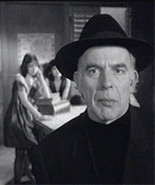 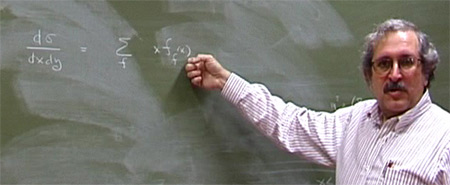 |
Arrows of Time
Ken McMullen says he does not feel comfortable with categories. That's why when, given a choice between defining himself as a painter or a film- maker, he prefers to be called an artist instead. He also does not believe in the separation between science and art, and mixes both disciplines in many of his films, as he did in his latest work, Arrows of Time. McMullen calls it a "very radical new form of cinema" that mingles high-energy physics and astrophysics concepts with tidbits of philosophy and poetry.
The British artist is a research professor at the University of the Arts London and lectures extensively on interdisciplinary artistic practice. He started his love affair with physics while directing a project called "Signatures of the Invisible", which brought together artists and scientists working at CERN, the European particle physics facility near Geneva, Switzerland.
"We basically had a correspondence, visually and in discussions, with physicists, both theoretical and experimental, and engineers," McMullen says. Out of that interaction came an exhibition that traveled all over the world, from New York to Beijing.
McMullen, who says he studied physics "until a reasonable level" in school, believes this partic-ular scientific discipline offers "one of the deepest ways into how nature works." He says that whether physics is peering into the smallest or largest scales, it is actually trying to define our position in the universe. The advantage of this approach to the meaning of life, McMullen says, is that "physics offers potential points of clarity which can be confirmed, whereas the mystic offers a kind of clarity which can never be confirmed."
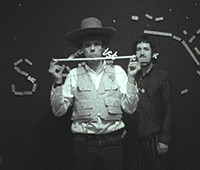 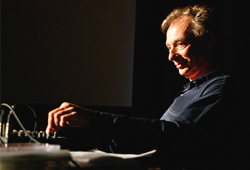 |
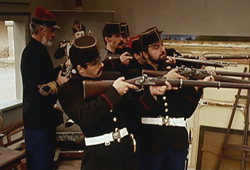  |
| Top right: filmmaker Ken McMullen |
Arrows of Time consists of 40 interchangeable elements. Ten deal with literature, 10 have an action element, 10 revolve about a central character, and the remaining 10 have to do with contemporary physics. These elements are combined in a different order for each showing, so that "you would never have enough seconds in your life to watch" all the possible combinations, McMullen says.
For the film's April 27 premiere at the Museum of Modern Art in San Francisco, McMullen chose to construct several timelines, each with its own combination of elements.
"I juxtaposed these components in different situations, so you may have a theorist like Michael Peskin talking about dark matter next to a poem by Fernando Pessoa, where he describes a time when suddenly a blindness has been lifted and he can see for the first time," McMullen says. He sees parallels between the two situations: Both represent moments when suddenly one can see from a unique perspective. "When you put these items together in a timeline," he says, "you begin to see that there is a great correspondence between different forms of activity." McMullen lets the spectator decipher the meaning of images, such as a woman in a white dress swinging a bright light around her head or living reproductions of classic paintings.
McMullen has made several visits to the Stanford Linear Accelerator Center to film conversations with physicists.
"What I do with the camera in this context is just making a diary," he explains. "Imagine if you had had a camera in the time of Copernicus and you were able to see him arguing with the church, or just making a statement. This would be an amazing thing to see, because we would be able to see a transition in human culture." He believes physics is arriving at another shifting point, and he wants to be there to film it.
Text: María José Viñas
Stills from Arrows of Time: Ken McMullen
Click here to download the pdf version of this article.


